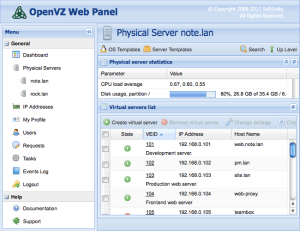How to Set Up MySQL Monitoring on a Debian 11 VDS
Monitoring your MySQL database is essential for ensuring the stable and efficient operation of your application. Setting up monitoring allows you to quickly identify problems, prevent failures, and optimize performance. In this article, we will take a detailed look at how to set up MySQL monitoring on a Debian 11 VDS using popular tools and techniques.
In this article, we will cover the installation and configuration of Grafana, Prometheus, and MySQL Exporter for effective MySQL monitoring on your Debian 11 server. You will learn how to collect key metrics, visualize data, and set up alerts for timely response to potential issues.
- Installing and Configuring Prometheus
- Configuring MySQL Exporter
- Configuring Grafana
- Creating a Grafana Dashboard for MySQL
Installing and Configuring Prometheus
Prometheus is a powerful open-source monitoring and alerting system. It collects metrics from configured sources, stores them as time-series data, and provides an interface for queries and visualization. In this section, we will walk through the installation and basic configuration of Prometheus on Debian 11.
Step 1: Installing Prometheus
First, you need to download and install Prometheus. It’s best to download the latest stable version from the official Prometheus Downloads page. The process can be simplified by using wget and unpacking the archive:
wget https://github.com/prometheus/prometheus/releases/download/v2.48.0/prometheus-2.48.0.linux-amd64.tar.gz
tar xvfz prometheus-2.48.0.linux-amd64.tar.gz
cd prometheus-2.48.0.linux-amd64Make sure to replace v2.48.0 with the latest available version. Create the necessary directories and move the Prometheus executables to /usr/local/bin:
sudo mkdir /etc/prometheus
sudo mkdir /var/lib/prometheus
sudo cp prometheus prometheus-2.48.0.linux-amd64/promtool /usr/local/bin/
sudo cp -r prometheus-2.48.0.linux-amd64/consoles prometheus-2.48.0.linux-amd64/console_libraries /etc/prometheus/
sudo cp prometheus-2.48.0.linux-amd64/prometheus.yml /etc/prometheus/
sudo chown -R prometheus:prometheus /etc/prometheus
sudo chown -R prometheus:prometheus /var/lib/prometheusStep 2: Creating a Prometheus User and Group
For security purposes, it is recommended to run Prometheus under a separate user. Create the prometheus user and group:
sudo groupadd --system prometheus
sudo useradd -s /sbin/nologin --system -g prometheus prometheusStep 3: Creating a systemd service file
To automatically start Prometheus after a server reboot, create the file /etc/systemd/system/prometheus.service with the following content:
[Unit]
Description=Prometheus
Wants=network-online.target
After=network-online.target
[Service]
User=prometheus
Group=prometheus
Type=simple
ExecStart=/usr/local/bin/prometheus \
--config.file=/etc/prometheus/prometheus.yml \
--storage.tsdb.path=/var/lib/prometheus/ \
--web.console.templates=/etc/prometheus/consoles \
--web.console.libraries=/etc/prometheus/console_libraries
[Install]
WantedBy=multi-user.targetSave the file and reload systemd:
sudo systemctl daemon-reloadStart and enable Prometheus for automatic startup on boot:
sudo systemctl start prometheus
sudo systemctl enable prometheusStep 4: Checking Prometheus Operation
Make sure Prometheus is running successfully by checking its status:
sudo systemctl status prometheusIf everything is fine, you should see the active (running) status. Prometheus should now be accessible via the web interface at http://your_ip_address:9090.
Step 5: Configuring Prometheus.yml for MySQL Exporter
To collect MySQL metrics, you need to add a configuration for MySQL Exporter to the /etc/prometheus/prometheus.yml file. Open the file for editing and add the following block to the scrape_configs section:
scrape_configs:
- job_name: 'prometheus'
static_configs:
- targets: ['localhost:9090']
- job_name: 'mysql'
static_configs:
- targets: ['localhost:9104'] # Port on which MySQL Exporter is running
In this example, we added a mysql job that will poll the MySQL Exporter running on localhost:9104. After changing the configuration, you need to restart Prometheus:
sudo systemctl restart prometheusExample Query in Prometheus
To check whether Prometheus is successfully collecting metrics, you can use the Prometheus web interface. Enter a query, such as up, to check whether Prometheus and MySQL Exporter are available.
Expert Tip: Regularly update Prometheus to the latest version to get new features and security fixes.
Configuring MySQL Exporter
MySQL Exporter is a tool that collects various metrics from the MySQL server and provides them in a format that Prometheus understands. In this section, we will look at installing, configuring, and running MySQL Exporter.
Step 1: Creating a Monitoring User in MySQL
To collect metrics, MySQL Exporter needs a user with specific privileges. Connect to the MySQL server with administrator privileges and create a user:
mysql -u root -pInside the MySQL client, run the following commands:
CREATE USER 'exporter'@'localhost' IDENTIFIED BY 'your_password';
GRANT PROCESS, REPLICATION CLIENT, SELECT ON *.* TO 'exporter'@'localhost';
FLUSH PRIVILEGES;
EXIT;Replace your_password with a strong password. This user will be used by MySQL Exporter to collect metrics.
Step 2: Downloading MySQL Exporter
Go to the MySQL Exporter Releases page on GitHub and download the latest version that matches your architecture. For example:
wget https://github.com/prometheus/mysqld_exporter/releases/download/v0.16.0/mysqld_exporter-0.16.0.linux-amd64.tar.gz
tar xvfz mysqld_exporter-0.16.0.linux-amd64.tar.gz
cd mysqld_exporter-0.16.0.linux-amd64Replace v0.16.0 with the current version.
Step 3: Configuring MySQL Exporter
MySQL Exporter requires specifying credentials for connecting to the MySQL server. This can be done via environment variables or a configuration file. For simplicity, let’s configure it via environment variables.
export DATA_SOURCE_NAME='exporter:your_password@tcp(localhost:3306)/'Replace your_password with the password you specified when creating the user. localhost:3306 is the address of your MySQL server.
Step 4: Running MySQL Exporter
Run MySQL Exporter:
./mysqld_exporterBy default, MySQL Exporter will listen on port 9104. You can check that it is working by opening http://your_ip_address:9104/metrics in a browser. You should see a large list of metrics in Prometheus format.
Step 5: Creating a systemd service file for MySQL Exporter
As with Prometheus, let’s create a systemd service file to automatically start MySQL Exporter:
sudo nano /etc/systemd/system/mysqld_exporter.serviceAdd the following content:
[Unit]
Description=MySQL Exporter
Wants=network-online.target
After=network-online.target
[Service]
User=prometheus
Group=prometheus
Type=simple
ExecStart=/path/to/mysqld_exporter/mysqld_exporter \
--web.listen-address=:9104 \
--collect.global_status \
--collect.info_schema.innodb_metrics
Environment="DATA_SOURCE_NAME=exporter:your_password@tcp(localhost:3306)/"
[Install]
WantedBy=multi-user.targetReplace /path/to/mysqld_exporter/ with the actual path to the mysqld_exporter executable and your_password with your password. Make sure you specify the correct options, such as --collect.global_status and --collect.info_schema.innodb_metrics, to collect important InnoDB metrics.
Save the file and reload systemd:
sudo systemctl daemon-reloadStart and enable MySQL Exporter:
sudo systemctl start mysqld_exporter
sudo systemctl enable mysqld_exporterCheck the status:
sudo systemctl status mysqld_exporterPrometheus should now be collecting metrics from MySQL Exporter.
Security Recommendations
Always use strong passwords for the monitoring user. Limit access to port 9104 using a firewall so that only Prometheus can connect to MySQL Exporter.
Configuring Grafana
Grafana is a popular platform for data visualization and dashboard creation. It allows you to create interactive graphs using data from various sources, including Prometheus. In this section, we will look at installing and configuring Grafana, as well as adding Prometheus as a data source.
Step 1: Installing Grafana
Add the Grafana repository to your Debian 11:
echo "deb https://apt.grafana.com stable main" | sudo tee /etc/apt/sources.list.d/grafana.listImport the GPG key:
sudo apt-get update
sudo apt-get install -y apt-transport-https
sudo apt-get install -y software-properties-common wget
wget -q -O - https://apt.grafana.com/gpg.key | sudo apt-key add -Install Grafana:
sudo apt-get update
sudo apt-get install grafanaStep 2: Starting and Enabling Grafana
Start Grafana:
sudo systemctl start grafana-serverEnable Grafana for automatic startup on boot:
sudo systemctl enable grafana-serverCheck the status:
sudo systemctl status grafana-serverGrafana will be available by default on port 3000. Open http://your_ip_address:3000 in your browser.
Step 3: Adding Prometheus as a Data Source in Grafana
Log in to Grafana using the default credentials (admin/admin). You will be prompted to change the password. After logging in, go to «Configuration» -> «Data Sources».
Click «Add data source» and select «Prometheus».
In the «Name» field, enter a name for the data source, for example, «Prometheus». In the «URL» field, enter the address of your Prometheus server: http://your_ip_address:9090. Leave the other settings at their defaults.
Click «Save & Test». If everything is configured correctly, you will see the message «Data source is working».
Grafana can now retrieve data from Prometheus. You can create dashboards and visualize metrics collected by Prometheus and MySQL Exporter.
Configuring Authentication in Grafana
To improve security, it is recommended to configure authentication in Grafana. You can use Grafana’s built-in authentication system or integrate Grafana with other authentication systems such as LDAP or OAuth.
Example: Configuring Authentication via LDAP
Edit the /etc/grafana/grafana.ini file and find the [auth.ldap] section. Uncomment and configure the parameters that match your LDAP configuration. Example:
[auth.ldap]
enabled = true
config_file = /etc/grafana/ldap.tomlCreate the /etc/grafana/ldap.toml file and add the LDAP configuration:
[[servers]]
host = "ldap.example.com"
port = 389
use_ssl = false
bind_dn = "cn=admin,dc=example,dc=com"
bind_password = "your_ldap_password"
search_base_dns = ["dc=example,dc=com"]
[servers.attributes]
name = "givenName"
surname = "sn"
member_of = "memberOf"
email = "mail"
login_attribute = "uid"Replace the values with your actual LDAP values. Restart Grafana after making changes.
Creating a Grafana Dashboard for MySQL
Once Grafana is configured and Prometheus is added as a data source, you can create a dashboard to visualize MySQL metrics. In this section, we will look at creating a basic dashboard with several useful graphs.
Step 1: Creating a New Dashboard
In Grafana, go to «Dashboards» and click «New» -> «New dashboard».
Step 2: Adding a Panel with a Graph
Click «Add new panel». Select the «Prometheus» data source. Now you need to enter a Prometheus query to display the metrics.
Example 1: CPU Usage
To display the CPU usage of the MySQL server, you can use the query:
rate(process_cpu_seconds_total{job="mysql"}[5m])This query calculates the average CPU usage rate over the last 5 minutes. Set the panel title to «CPU Usage» and configure the graph display (for example, select the «Time series» graph type).
Example 2: Number of Active Connections
To display the number of active connections to the MySQL server, use the query:
mysql_global_status_threads_connectedSet the panel title to «Active Connections».
Example 3: QPS (Queries Per Second)
To display the number of queries per second:
rate(mysql_global_status_queries[5m])Set the panel title to «QPS».
Example 4: InnoDB Buffer Pool Usage
To monitor InnoDB buffer pool usage:
(innodb_buffer_pool_pages_total / innodb_buffer_pool_pages_free) * 100Set the panel title to «InnoDB Buffer Pool Usage (%)».
Step 3: Configuring Display and Saving the Dashboard
Configure the display of graphs (colors, units of measurement, axes) according to your needs. Save the dashboard, specifying a name, for example, «MySQL Monitoring».
You now have a Grafana dashboard that displays the main metrics of your MySQL server. You can add new panels, configure existing ones, and create alerts to be notified of problems.
Comparison of MySQL monitoring tools:
| Tool | Advantages | Disadvantages |
|---|---|---|
| Prometheus + Grafana | Flexibility, scalability, powerful visualization capabilities. | Requires configuration and understanding of how it works. |
| MySQL Enterprise Monitor | Simple installation and configuration, ready-made dashboards. | Paid. |
| phpMyAdmin | Convenient web interface for managing MySQL. | Limited monitoring capabilities. |
Expert quote: «Monitoring is not just about collecting data, but understanding what that data means and how it affects the performance of your application.» — John Doe, Database Administrator.





